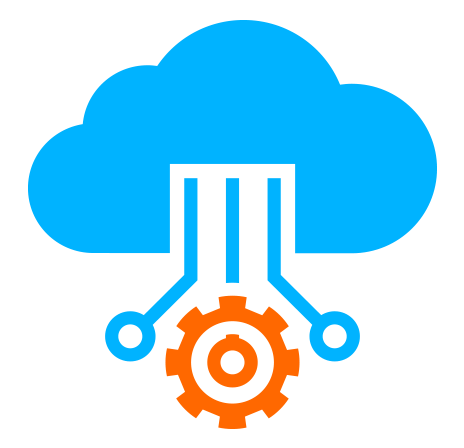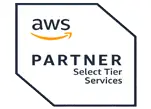 Server
Colocation
Server
Colocation
 CDN
Network
CDN
Network
 Linux Cloud
Hosting
Linux Cloud
Hosting
 VMware Public
Cloud
VMware Public
Cloud
 Multi-Cloud
Hosting
Multi-Cloud
Hosting
 Cloud
Server Hosting
Cloud
Server Hosting
 Kubernetes
Kubernetes
 API Gateway
API Gateway

In the ever-growing digital world, where businesses run on data, having the right storage infrastructure can make or break operations. One solution that continues to dominate the enterprise space is SAN (Storage Area Network)—a high-performance, scalable, and reliable storage setup that connects servers to disk arrays for centralized storage access.
But here’s the big question most IT managers and procurement heads face today: What exactly goes into SAN storage pricing, and how can we estimate or control those costs?
With the rise of cloud adoption, hybrid infrastructure models, and local Indian providers like Cyfuture Cloud offering competitive storage solutions, understanding the true cost of SAN is more important than ever.
Let’s dive deep into SAN storage pricing, the factors that influence it, and how to make cost-efficient decisions for your enterprise storage needs.
According to a 2024 Gartner report, over 60% of large enterprises still use SAN storage for mission-critical workloads, including banking systems, healthcare records, enterprise databases, and virtualization environments.
Even in the age of cloud-native architecture, SAN offers unmatched performance for applications that demand low latency, high throughput, and dedicated bandwidth—think of it as the high-speed train in the storage world.
What’s more, with the hybrid cloud gaining momentum in India, many businesses now combine on-prem SAN setups with public or private cloud platforms like Cyfuture Cloud, which offer server integration and storage orchestration to match evolving demands.
Unlike simple consumer-grade storage (like Google Drive or Dropbox), SAN pricing is complex. It’s not just about GBs or TBs—it’s a combination of hardware, software, licensing, maintenance, and future scalability. Here’s a breakdown of what you're actually paying for:
This is the biggest chunk of any SAN deployment. It includes:
Disk Arrays: These can be SSDs (expensive but faster) or HDDs (cheaper, slower).
Approx. Price (India):
SAS HDD (1 TB): ₹8,000–₹12,000
SSD (1 TB): ₹20,000–₹40,000
Storage Controllers: The brains behind data routing, redundancy, and security.
Enclosures & Racks: Physical infrastructure to host your drives.
High-end enterprise SAN setups can easily start at ₹8–15 lakh and scale into crores depending on the configuration.
SAN requires a dedicated high-speed network to connect storage and servers—usually Fibre Channel or iSCSI.
Switches: Fibre Channel switches can cost ₹2–5 lakh depending on port capacity.
HBAs (Host Bus Adapters): Required for each server to access SAN, ₹15,000–₹50,000 per unit.
Cables: Fibre cables are costlier than standard Ethernet.
Here's where recurring costs creep in.
Storage Management Software: GUI-based tools for provisioning, backup, and monitoring.
Replication & Snapshot Licenses: Needed for DR (Disaster Recovery) and backup solutions.
Virtualization Integration: Optional add-ons for VMWare or Hyper-V support.
Licensing can account for 10-20% of total upfront costs, with recurring annual maintenance fees.
Hardware warranties typically last 1–3 years. Beyond that, AMC (Annual Maintenance Contracts) are crucial.
AMC Charges: Usually 8–15% of initial hardware cost per year.
On-site Support: Charged separately if you need 24/7 on-call technicians.
Often overlooked, but very real.
SAN systems consume significant power and generate heat.
You need dedicated rack space, UPS backup, and cooling units.
Estimate an additional ₹1–2 lakh per year in operational overhead for mid-sized deployments.
Now that we’ve broken down the components, let’s explore the critical variables that determine your final bill.
SSD-based SAN is faster but far more expensive. It’s ideal for performance-sensitive workloads like high-speed transactional databases or VDI.
If your need is archival or backup, HDD-based SAN will offer better cost efficiency.
Enterprises today mix and match storage based on data priority.
Hot data → stored on SSDs
Warm/cold data → stored on HDDs
This tiered approach helps optimize SAN storage price by not overusing premium resources for non-critical data.
Want zero downtime? That costs more.
Redundant arrays (RAID 10, RAID 6), dual controllers, and mirrored fabric paths significantly raise costs but ensure 24x7 business continuity.
Are you planning for now or for the next five years?
Buying scalable systems that allow “pay-as-you-grow” models are more future-ready but come at a premium initially.
This is where Cyfuture Cloud enters the picture with hybrid SAN offerings that scale horizontally and vertically—reducing upfront CAPEX and moving to OPEX.
With cloud adoption in India on the rise, businesses are shifting to cloud-integrated SAN, which combines local performance with cloud scalability.
Providers like Cyfuture Cloud offer SAN as a service, hosted in their Tier-III and IV Indian data centers, cutting the need for in-house infrastructure.
Benefits include:
On-demand provisioning
Indian data residency compliance
Monthly billing cycles instead of one-time investments
For organizations that need SAN-grade performance without the infrastructure burden, Cyfuture Cloud offers a smart alternative.
Pricing: Starts at approx. ₹599/month for 100 GB and scales with your needs.
Data Security: ISO 27001-certified data centers
Performance: SSD and NVMe-backed SAN architecture
Support: 24/7 NOC team for monitoring and disaster response
Their services are especially ideal for SMEs and public sector clients who want predictable billing and local compliance.
SAN storage pricing in India can swing dramatically depending on your tech stack, workload type, and scalability needs. But blindly comparing numbers without understanding what’s included is a mistake.
Here’s a quick recap:
Small SAN setups (10 TB, HDD-based) may cost around ₹10–15 lakh.
Mid-sized performance SAN (20–30 TB, SSD mix) can go up to ₹30–50 lakh.
Large-scale enterprise SAN with redundancy, DR, and automation? Well over ₹1 crore.
That’s why more organizations are shifting to cloud-integrated SAN models, and local providers like Cyfuture Cloud are emerging as cost-effective, scalable options with reliable support.
So before you write that cheque or approve that PO, ask yourself:
Do you need to own the hardware, or just the performance it delivers?

Let’s talk about the future, and make it happen!
By continuing to use and navigate this website, you are agreeing to the use of cookies.
Find out more


